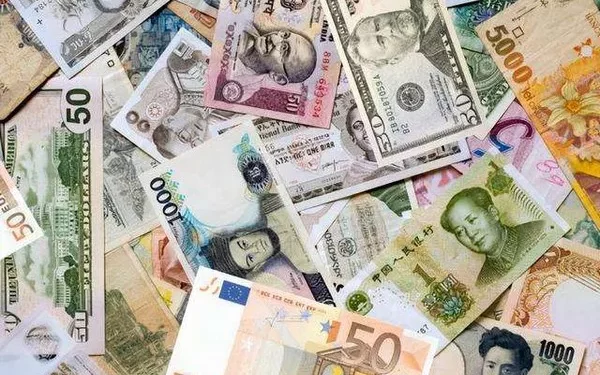In the intricate web of economic policy, one of the critical levers manipulated to control inflation and stabilize the economy is the Federal Reserve’s interest rates. The question of who holds the power to raise the Fed‘s interest rates is central to understanding the mechanisms that shape the financial landscape. This article aims to dissect the various players and influencing factors involved in the decision to raise the Fed’s interest rates.
The Federal Reserve’s Mandate:
Before delving into the nuances of interest rate adjustments, it’s essential to understand the Federal Reserve’s mandate. Established in 1913, the Federal Reserve, often referred to as the Fed, is tasked with promoting maximum employment, stable prices, and moderate long-term interest rates. The authority to raise the Fed’s interest rates aligns with its commitment to maintaining price stability, a key pillar of its mandate.
The Federal Open Market Committee (FOMC):
At the heart of the decision-making process lies the Federal Open Market Committee (FOMC), the policy-setting arm of the Federal Reserve. Comprising 12 members, including the seven governors of the Federal Reserve Board and five Reserve Bank presidents, the FOMC holds the authority to raise the Fed’s interest rates. Through regular meetings, this committee assesses economic conditions and determines the appropriate stance on monetary policy, including interest rates.
Chair of the Federal Reserve:
While the FOMC collectively decides on interest rate adjustments, the Chair of the Federal Reserve wields significant influence in shaping these decisions. As of the last knowledge update in January 2022, Jerome Powell held this pivotal role. The Chair provides leadership to the FOMC and plays a crucial role in building consensus among its members. The Chair’s public statements and speeches are closely scrutinized for hints on the potential direction of interest rates.
Economic Indicators and Data:
Raising the Fed’s interest rates is not a decision made in isolation. The FOMC relies heavily on economic indicators and data to inform its choices. Key indicators include inflation rates, employment figures, and GDP growth. An uptick in inflation may prompt a decision to raise the Fed’s interest rates as a preemptive measure to curb excessive price increases and maintain overall economic stability.
Inflationary Pressures:
One of the primary triggers for the decision to raise the Fed’s interest rates is the presence of inflationary pressures. Inflation erodes the purchasing power of a currency, leading the Fed to take corrective measures. By raising interest rates, the Fed aims to cool off economic activity, reducing the risk of spiraling inflation. This proactive approach demonstrates the Fed’s commitment to maintaining price stability, a key element of its dual mandate.
Global Economic Conditions:
The interconnected nature of the global economy means that the Fed must also consider external factors when contemplating whether to raise interest rates. Global economic conditions, including trade tensions, geopolitical events, and the health of major economies, can influence the Fed’s decisions. A fragile global economic landscape may prompt the Fed to adjust interest rates to safeguard the stability of the U.S. economy.
Financial Markets and Investor Expectations:
The financial markets play a crucial role in transmitting the impact of interest rate decisions. Raising the Fed’s interest rates can have ripple effects on various asset classes, including stocks and bonds. The FOMC carefully considers market reactions and investor expectations when contemplating rate adjustments. Clear communication from the Fed is essential to manage expectations and minimize market volatility.
Labor Market Dynamics:
Maximum employment is a key component of the Fed’s mandate, and the state of the labor market is a vital consideration in decisions to raise interest rates. Low unemployment rates coupled with robust job creation may signal a need to prevent the economy from overheating, prompting the Fed to raise interest rates. This dual focus on employment and inflation reflects the balanced approach the Fed adopts in fulfilling its mandate.
Historical Precedents:
Examining historical precedents provides valuable insights into the factors that have historically led the Fed to raise interest rates. Past instances, such as the tightening cycles in the 1980s and early 2000s, offer a blueprint for understanding the conditions under which the Fed deems it necessary to raise rates. Analyzing these historical contexts enhances our ability to anticipate the Fed’s potential actions in response to evolving economic conditions.
Public and Congressional Influence:
While the primary responsibility for interest rate decisions rests with the Federal Reserve, public and congressional sentiment can exert indirect influence. Policymakers are mindful of the potential political and public backlash that may accompany decisions to raise interest rates. This awareness underscores the delicate balance the Fed must strike between adhering to its mandate and navigating the broader economic and political landscape.
Conclusion:
In the intricate dance of economic policy, the decision to raise the Fed’s interest rates involves a complex interplay of institutions, individuals, and economic indicators. The Federal Reserve, through the FOMC and its Chair, stands as the central architect of these decisions, guided by a dual mandate to promote maximum employment and stable prices. As we navigate the ever-evolving economic landscape, understanding the dynamics of interest rate adjustments is paramount for businesses, investors, and individuals alike.
Related Topics:
Understanding Navy Federal Interest Rates: A Full Guide
Federal Bank FD Rates 2023: A Comprehensive Guide
FED Monetary Policy: What Are Its Goals? How Does It Work?

























